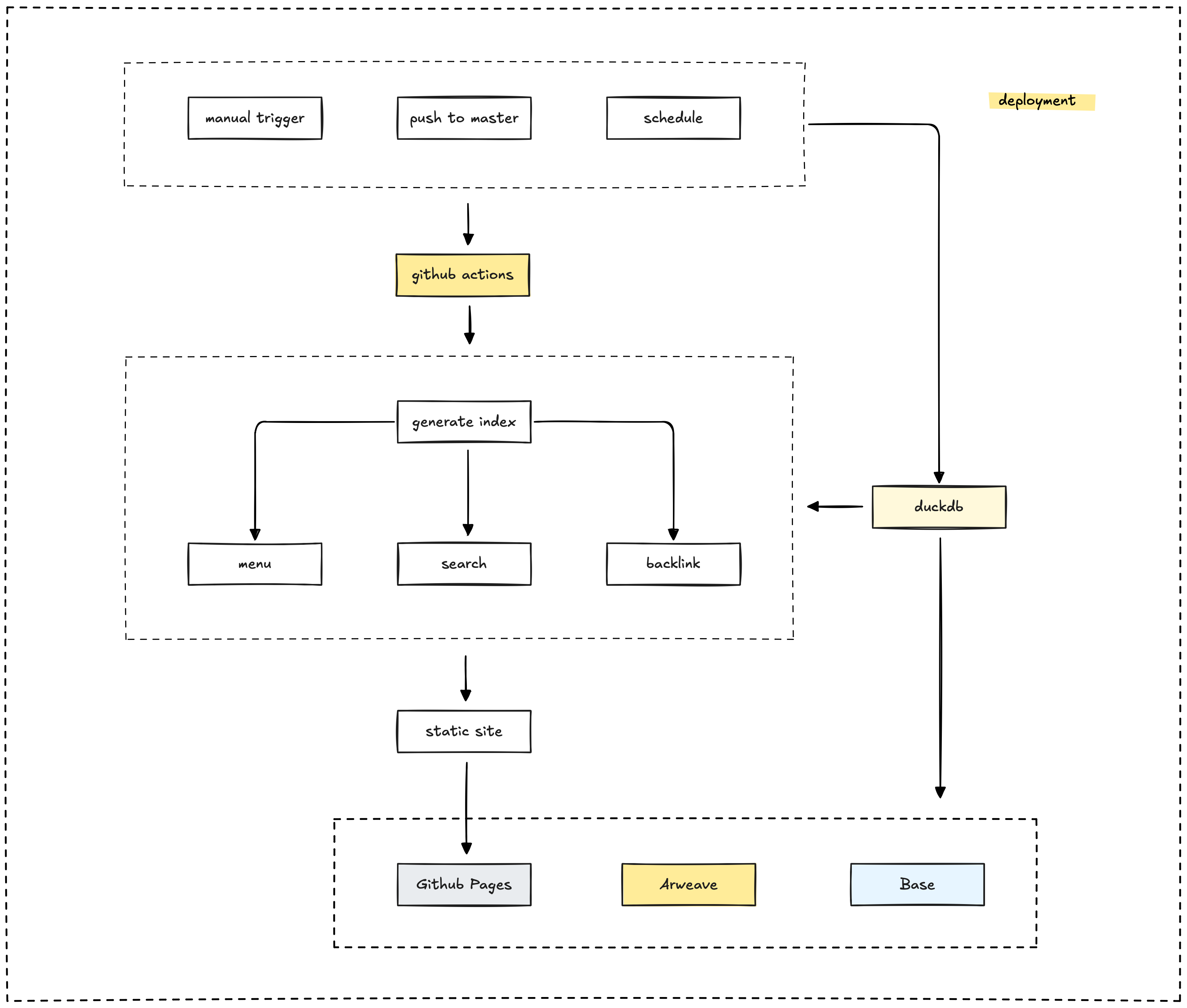The Memo platform leverages GitHub Actions to automate the deployment process. This includes publishing the website and integrating with our blockchain and permanent storage systems.
GitHub Actions workflows
We use several distinct GitHub Actions workflows to manage different aspects of the deployment pipeline:
| Workflow | Trigger | Purpose |
|---|---|---|
| main.yml | Push to main | Builds and deploys the Next.js application to GitHub Pages. |
| dispatch.yml | Push to dev | Updates submodules and exports processed data to DuckDB. |
| deploy-arweave.yml | Push to main (parquet changes) | Deploys content marked for permanent storage to Arweave. |
| add-mint-post.yml | Push to main (parquet changes) | Mints selected content as NFTs on the blockchain. |
| backup.yml | Daily schedule | Creates a daily backup of the DuckDB database to AWS S3. |

Deployment workflow steps
The overall deployment process is a multi-step workflow that ensures content is built, optimized, and published correctly:
- Content processing: The content goes through the DuckDB pipeline for extraction, processing, and storage.
- Static index generation: We generate static files for the navigation menu, search index, backlinks, and redirects.
- Next.js static site generation: Next.js builds the static website from the processed content and generated indexes.
- Deployment to GitHub Pages: The built static site is published to GitHub Pages, making it accessible to users.
- Optional onchain actions: Content marked for permanent storage is deployed to Arweave, and selected content can be minted as NFTs.
Next: Build an onchain profile
